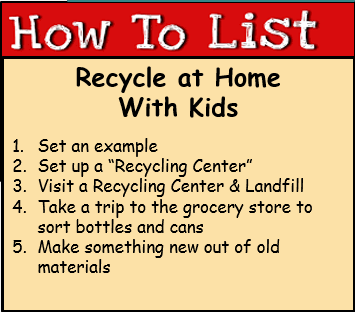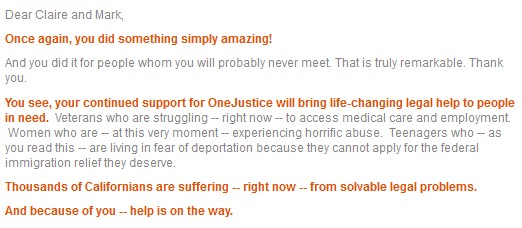
Are you aware that one of the hottest things in for-profit management over the past 5 – 10 years or so is “customer experience?” There’s an entire industry that’s grown up around it.
It’s something that goes beyond customer service.
Customer service is to an outbound marketing world what customer experience is to an inbound marketing world. The former you do to your constituents; the latter you do with them.
You may be asking why this is important.
Post digital revolution, nonprofits must adapt to the realities of inbound marketing. The way people find and engage with you in a constantly connected, networked marketplace has changed. Your constituencies crave interaction. And meaning. And, gosh darn it, they want you to make them feel good!
They want a full-bore, positive experience with you.
Fail to deliver? They’ll go elsewhere.
How to make your donor’s experience a happy and satisfying one.
First, don’t give up on customer (aka donor) service. It’s still important! Customer experience is really just customer service on steroids. There are many definitions, but it boils down to the fact that good customer experiences: (1) deliver value; (2) make it easy to find and engage with the value, and (3) are enjoyable (emotionally engaging so people want to continue to engage).
Customer service is the provision of service to customers before, during and after a purchase… an organization that values good customer service may spend more money in training employees than the average organization or may proactively interview customers for feedback. – Wikipedia
Customer service is a series of activities designed to enhance the level of customer satisfaction….” — Turban, Lee, King, & Chung, 2002
Customer experience is the product of an interaction between an organization and a customer over the duration of their relationship.” – Wikipedia
Customer experience is the sum-totality of how customers engage with your company and brand, not just in a snapshot in time, but throughout the entire arc of being a customer. – Adam Richardson, Harvard Business Review, 2010
Customer experience: “How customers perceive their interactions with your company.” – Forrester Research
If you want to learn more about the bandwagon onto which all for-profit marketers are jumping, I highly recommend Strategic Customer Service and Customer Experience 3.0 by customer experience guru John Goodman.
Guess what? The social benefit sector should be jumping on this bandwagon as well!
It’s time to jump on the customer experience bandwagon.
Donors are fundraising’s customers. And only satisfied customers remain customers.
Adrian Sargeant found through his groundbreaking donor retention research that the single largest reason donors failed to renew was… (guess)…
Yup. Poor service. From the fundraising department (see Donor Retention: What Do We Know and What Can We Do about It?)
Though I’d wager that bad service from anyone at your nonprofit drives donors away.
In fact, Sargeant found that only 10% of donors were very satisfied with the service quality of the organizations they supported (awful!). Here’s the kicker: donors who were very satisfied with service quality were two times more likely to make a further donation than those who were merely satisfied. So… there’s room to improve — and raise more money — with 90% of your donors!
By the way: Just because you’re not getting a lot of complaints doesn’t mean your supporters are happy. Per Goodman, there are two areas where folks are often unhappy with service but don’t complain much: health care and nonprofits.
For nonprofit donors, generally they’re unhappy due to your perceived lack of gratitude and/or because they don’t really have a good sense what their money accomplished.
These unhappy folks are ticking time bombs when it comes to what you can expect from the lifetime value of your donors.
You can fix this!
Want some concrete tips to create a better donor experience?
Goodman and Clairification to the rescue!
Both of us advocate a mix of planned and random acts of kindness.
Part of what you want to plan for is building an overall, organization-wide culture of philanthropy so that everyone who comes into contact with your donors – no matter what department they work in – makes your supporters happy.
The other things you want to plan for are specific strategies for thanking, recognizing, interacting with and reporting back to your supporters on a consistent basis over the course of the year. Commit to making involvement and investment with you a transformation experience – a journey, if you will – rather than a single transaction.
Finally, I encourage you to channel an attitude of gratitude that will inspire you to perform random acts of kindness as the spirit moves you. Keeping a Donor Gratitude Journal is one way to get in the gratitude head zone. There are others as well.
Here are a mix of Goodman’s tips, and mine, to generate greater engagement, make donors happier and keep them longer.
6 ‘Acts of Donor Kindness’ for you to try
1. Deliver “Psychic Pizza.”
What if you’re really busy, and really hungry, and someone shows up right now with an unexpected gift of pizza? According to Goodman, if you can proactively anticipate what your donor wants or needs, you can create an exceptionally gratifying experience. They shouldn’t have to contact you to get what they need (e.g., a report on the outcome of their giving). You should provide it before they even realize they want it!
EXAMPLE: You work at a parenting organization. Perhaps your supporter first encounters you when they have a new baby and join a “New Moms & Dads” group. What if you keep track of them and send them information they can use at developmentally appropriate times (e.g., “Thought you might be interested in this “Tip Sheet: How to Introduce Solid Foods.”) Or perhaps you work at an environmental summer camp. Stay connected during the course of the school year by offering “How to Recycle at Home with Kids.”

Offer value to make donors happy
ACTION TIP: Brainstorm 10 things you might do to deliver Psychic Pizza to your supporters in the weeks and months ahead. They do say “it’s the thought that counts,” so think about what you might do. Step into your donor’s shoes by asking “What’s in this for me?” What might add a little zip to their day?
2. Solicit complaints and feedback from all stakeholders including donors and front line employees.
This is especially important in the nonprofit sector, where people get annoyed with organizations but don’t bother complaining because they don’t think it will do any good.
ACTION TIPS:
- To staff, send a message of “we can only solve problems we know about.” This builds goodwill and surfaces issues you would normally not hear about.
- For donors, maybe send out a non-appeal headlined “Don’t send us money!” Rather, say “Opinions wanted!” Simply enclose a brief survey asking for feedback/advice on your programs. What a nice way to simultaneously demonstrate you care about folks for more than their wallets and also get them directly engaged.

Sample survey offered from website
3. Focus greater attention on your mid-level donors, volunteers and influencers.
These supporters may have greater incremental revenue potential than your top donors who often are already giving you everything they reasonably can. There’s often hidden gold in your existing database, and it’s treasure too frequently ignored.
ACTION TIPS:
- Create and send ‘Donor Appreciation Certificates’ to mid-level donors and/or donors who also volunteer. Figure out when it makes sense. Maybe it’s to reward longevity of giving. Or response to a special campaign. Get creative, and share the love.

Shower the donors you love with love
- Lavish attention on influencers, especially peer-to-peer fundraisers. In our digital age, a seemingly ‘small’ donor can become the functional equivalent of a major donor by virtue of sharing with their networks.
4. Get creative with thank you’s to WOW supporters.
There are scads of little things you can do (grab Creative Ways to Thank Your Donors for 62 ideas) to show donors their gift is appreciated – more than they even imagined! Some of them are simple and easy to implement. Others are more labor-intensive, but well worth the effort.
EXAMPLE: Once, early in my career as a development officer, I decided to secretly deliver plates of home-baked cookies to each of my planned giving donors. I just chose a day, motored myself around the city in the early morning hours, and left the cookies on their doorsteps with a little note of thanks. Pure delight on both of our parts! Sadly (or fortunately) my list of planned gift donors grew over time to the point where I could no longer engage in this particular activity. But there are virtual ways to do this too.

I love to bake!
HINT: If you’re having trouble justifying putting time and money into a more robust donor acknowledgement and recognition strategy, consider a test. Do nothing for one group; do something for the next. After 14 months, measure which group gave and/or renewed at a higher level.
ACTION TIPS:
- Renewing donors: Send a stick of chewing gum in the thank you letter to everyone who renews their gift: “Thanks for sticking with us.”
- Upgrading donors: Send some gold star stickers to donors who upgrade their gift: “Your increased support this year merits you a gold star!”
- Major donors: Send a 30-90-second video thank you to a major donor. You can text it, send via social media or send via email. It’s easy to create on your cell phone, and it will definitely make you stand out from the competition!
- Don’t just do what people expect. You’ll get a bigger bang for your buck with all donors when you really delight them with your acknowledgments. It’s like the difference between searching for and finding that “perfect” holiday gift for someone, vs. buying just “something” from a catalogue at the last minute or giving a gift card. Borrow a page from Disneyland when it comes to thinking about ways to “wow” your supporters.
5. Tell donors how great they are, not how great you are.
Donor’s give not because they buy into a story about you, but because they buy into a story about themselves – as they’d most like to be. So hold a mirror up to them that shows them they’re a hero.
“We support a charity or a soccer team or a perfume because it gives us a chance to love something about ourselves.”
–Seth Godin

Make your donor the hero – this makes them happy
ACTION TIP: Whenever you send an appeal, simultaneously prepare a thank you letter (and/or email) that connects the dots between the donor and what their gift accomplished. “You did it! Because you care, Jimmy will go to sleep tonight with a fully tummy.”
6. Make someone on your staff responsible for donor service.
Make it their explicit goal to build trust. Trust is your new marketing asset. It comes from showing you care about folks for who they are (people who share your values), and not just for their money.
Bottom line:
As a fundraiser, you’re fundamentally in the donor happiness business.
If you’re not spending a significant amount of your time trying to make your donors happy, you’re not doing your job.
Good service makes people happy. Acts of kindness make people happy. Engaging experiences make people happy.
The more you come from a place of kindness and service, the more likely your donors will stick around, feel a sense of belonging, and respond to fundraising appeals when the time comes.
This advice could not possibly come at a better time. People are tired of doom and gloom. Give them some happiness. Show them some meaning. Tell them what they did that changed someone’s life. Or just change their life.
 Don’t forget to enroll in Clairification School so you won’t miss an article!
Don’t forget to enroll in Clairification School so you won’t miss an article!
Enroll here. It’s less than $2.00/week for a whole lot of news you can use. Please join today if you find Clairification helpful. Your support makes it possible! If you’ve already enrolled, THANK YOU. You are my hero.
Image courtesy of freedigitalphotos.net






Great post! On a related note, check out this “Master’s of Scale” podcast http://www.stitcher.com/podcast/stitcher/masters-of-scale/e/airbnbs-brian-chesky-in-handcrafted-50165838 “If you want your company to truly scale, you first have to do things that don’t scale. Handcraft the core experience.”
Thanks for the link. It all boils down to taking the time to think like — and be — a human being.
Thought this had some interesting ideas!